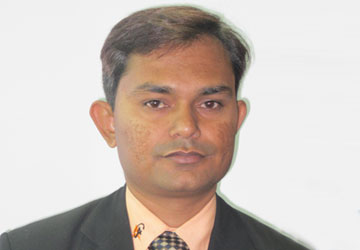What kind of demand you see in the industry and how your product offering strategies are?
We are into manufacturing of CNC waterjet cutting machine, CNC laser cutting machine, CNC plasma cutting machine and robotic waterjet cutting machine. Our major focus is on non conventional cutting methods. These are all futuristic technologies; if you look worldwide these technologies are there since last 30-40 years, but in India it’s still not been utilised properly.
So we feel there is lot of opportunities for such technologies in future and would like to provide best solution to encash this opportunity.
We have made it a point that we want to provide high quality product, so we import the best component available in the market. Our machines are equipped with best available components in the industry, like our waterjet pump, CNC controller & motion components are from Germany.
Frankly speaking the market is not going in an upward direction. But, we expect may be five years down the line there will be a good scope for these technologies.
What are the fundamental differences when it comes to cutting methods like plasma, waterjet and laser?
We have adopted a unique approach so that these technologies are not competing against each other; we are very neutral because all the three products are in our basket. Depending on the customer’s requirement we suggest the right technology after studying their requirement in detail.
If you take plasma, it cuts metal by highly ionised gas, very high heat is transferred to the metal to erode or vaporise the metal. Plasma cutters use electricity to superheat air into plasma, which is then blown through the metal to be cut. A laser cutter directs and focusses a laser beam onto a material which is cut. As the beam hits the material, it vaporises to leave a cut. So the common thing between these two technologies is that they generate heat and they have thermal resistance.
Waterjet cutting has its own advantages. The positive thing about the waterjet method is that there is no thermal process. An application where heat is not allowed such as orthopedic implants, few aerospace components, or where there is thicker and non ferrous material, waterjet suits the best.
So all these technologies are unique and have its own advantages.
What are the benefits of waterjet cutting and what are the applications it is better suited for?
Major advantage of waterjet is that it can cut most of the materials like aluminium, brass, copper, allows, titanium, even non metals like rubber, marble etc. It is a very versatile technology and that is the major advantage. Thicker materials can only be done by waterjet, let’s say if you want 100 mm stainless steel or titanium to be cut it is possible only with the use of waterjet not laser or plasma.
Effect of automobile industry slowdown…
It is one of the most important industries. If the automotive industry is doing well, it affects all others in a positive way. At present the automotive industry in India is sustaining, but not growing at the rate it should grow. So there is both direct and indirect impact.
Our laser products are very much used in the automotive industry specifically as the materials used are thin as compared to that of general engineering. So if that industry is not doing well it affects the laser industries directly. Companies providing robotic waterjet solutions are also affected a lot. We are expecting the industry will bounce back in 1-2 years.
Which are the other emerging sectors?
Job shop is a promising sector and there is huge scope for growth in the near future. Now-a-days several big companies outsource some of their machining activities from job shops. It helps them cut down on cost as they dont have to invest in a particular technology; else they will have to use it for longer hours to get the ROI. This was they get their work done at a reasonable cost and at the same time job shop owner gets a his share of business.
Challenges faced…
There are a few challenges as the overall economy is not doing great. People are not at all optimistic and capital good market is the first to get affected.
One more thing that is affecting the industry is the rupee depreciations. In our industry, almost everyone is associated with the foreign countries or companies. Some or the other component is imported, so higher the dollar rate against rupee worse the problem. So all the input cost have gone up by 50% as compared to what it was two years ago.
Do you think SMEs are ready to adopt highly automated technologies?
They are ready to adopt the technologies but are often pulled back due to lack of finance. SMEs in India are facing major financial crunch, banks are not providing loan easily and if they do the interest rates are very high. So the overall viability sometimes doesn’t work for them.
nishant@mfgtechupdate.com


